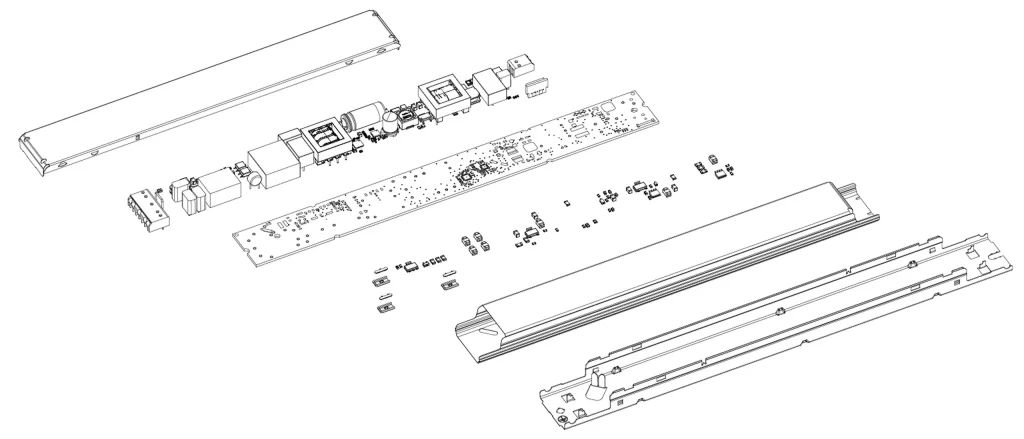We develop lighting technology that has a positive impact on quality of life and contributes to sustainable development of the planet. The power consumption of our devices during use accounts for the majority of CO2 emissions, however topics such as resource consumption and the circular economy are becoming increasingly important to us.
For many years, we have therefore focused our attention on resource consumption and optimising the energy efficiency of our products. In addition to this, we consider all sustainability aspects across the life cycle of a product.
Sustainable products is an important pillar in our sustainability strategy ‘Sustainable Citi-Electronic’.
We take this into account by appealing specifically to customers’ sense of sight and literally presenting food “in the best light” – with light colours at the shelves precisely matched to the intended use and the merchandise and pleasantly uniform lighting in the aisles.

For us, energy efficiency means that our products offer a consistent or even improved light output, while at the same time reducing power consumption.
An awareness of the raw materials used, the added value of the respective product and its life cycle serve as the basis for us to use resources efficiently.
We produce our products with the aim of minimising resource consumption in the long term. We do this by using materials more efficiently and also making use of recyclable raw materials. We are also committed to increasing the proportion of recyclable materials in our products.

In a circular economy, resources are used efficiently in a closed cycle. The approach of the Cradle to Cradle® (C2C) design concept is to create products for the long term by allowing them to be reused in a new cycle. Our goal is to align our premium product portfolio by 2030 with the Cradle to Cradle® design concept.
C2C is one of the strictest and most comprehensive sustainability certifications in the world. In order to achieve Cradle to Cradle® certification, products must meet environmental and social criteria, such as the use of safe and healthy materials and the efficient use of energy and water. The products must also be created using responsible manufacturing and supply chain practices.
As a technology company that operates globally, meeting these criteria on a long-term basis poses a challenge for us and at the same time forms the necessary basis for a sustainable product life cycle.
Status: certified >> selected LED modules are Cradle to Cradle certified®, read the press release here
Status: certified >> selected LED drivers are Cradle to Cradle certified®, read the webnews
Status: implemented >> the majority of our product packaging is fully recyclable
Material reduction of our GEN4 LED drivers by up to 25%
Since 2011, we have been providing our customers with Environmental Product Declarations for well-thought-out choices relating to sustainability.
An Environmental Product Declaration (EPD) is a product-specific data sheet. It provides a detailed list of all the effects the product has on the environment during its life cycle, for example:
Processed raw materials
Energy demand over the product’s entire life cycle
Raw material provision
Production
Transport
Service life and waste disposal.
The data found in an EPD provides customers with valuable information relating to the environmental aspects of the product being used.
Our EPDs make it easier for luminaire manufacturers to create their own life cycle analyses for their products.
They also provide information that is relevant to sustainable building certification. Architects and project planners can use EPDs to draw conclusions about the energy efficiency and environmental effects of our products in buildings.
EPDs are based on the EN ISO 14025 and EN 15804 standards. The EPD system is verified periodically by the Institut Bauen und Umwelt and the declarations are signed by an independent auditor.
You can find an EPD document for most of our products in the download area of our eShop.
By signing up you agree to our Data protection policy
© Citi-Electronic. All rights reserved.